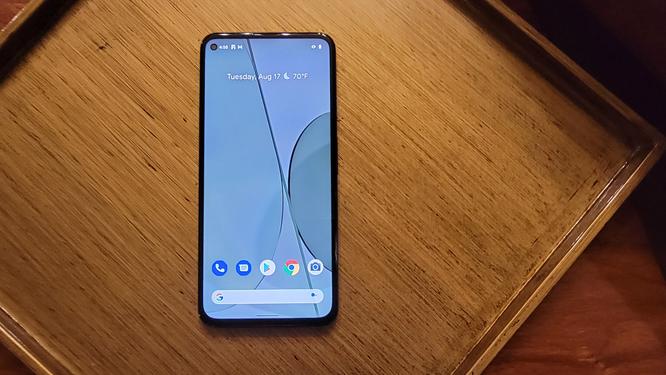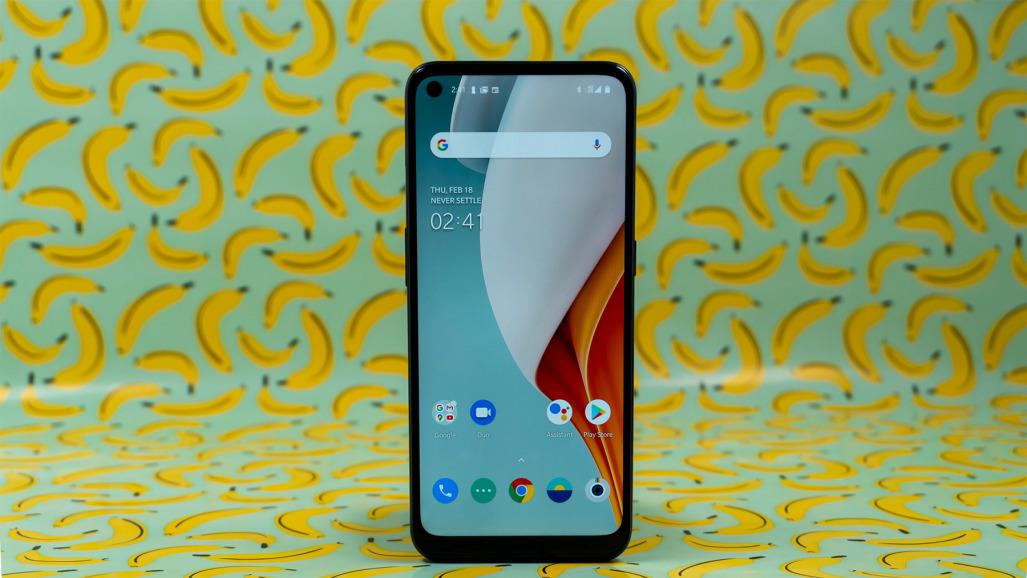
The Best Phones for Kids in 2022
I'm one of PCMag's phone experts, and also a parent, so I've thought a lot about kids and phones. Mobile phones are useful, powerful, and helpful. They're also expensive, distracting, and a potential gateway to a lot of nasty things on the internet. So should you get your kid a phone? And if so, which one is the best cell phone for kids or the best phone watch for kids?
The Cardinal Rule for Kids' Phones
There's one big reason to give your child a phone: if they're often out of sight of trustworthy adults and may need to contact you or another caregiver.
If your kid wants to play games or watch videos on a personal device but doesn't need cellular connectivity, the iPod touch is a great idea. At under $200, the iPod touch is a great not-phone. It plays videos and less-intense games just fine, without any of the cost or complexity associated with cellular service. For example, Toca Boca kids' games work well on the iPod touch.
If you're not a fan of Apple products, look at low-cost, unlocked Android phones that don't require a SIM card. They can do everything a regular Android phone can, just over Wi-Fi.
The Apple iPod touch isn't a phone, but it runs the same games and messaging apps as an iPhoneThinking About Your Kid's First Phone
Do not buy your child an expensive, high-end smartphone.
The Wait Until 8th campaign, which advocates only giving kids smartphones once they reach the 8th grade, makes some good arguments, though it too easily elides smartphones and social media, which are different things. The campaign's central point, though, is that younger kids generally only need phones for calling and limited texting.
*Deals are selected by our partner, TechBargains
When you do step up to a smartphone, don't spend too much money. Kids aren't responsible, because they're kids. They lose phones, drop phones, soak phones, and break phones. Assume it will happen. There are a ton of good phones in the $200 to $400 range that run relatively new, secure versions of their operating systems, aren't frustrating to use, and don't look shamefully uncool.
We are not going to get into the endless debate, never resolved, about cell phone radiation and kids, but many parents have expressed concern to us about it. The "good" news is that radiation concerns really come into play only when a phone is held right up to your head for long periods. Kids don't talk on the phone with their friends much anymore; they text. Short conversations with parents on a basic phone, for safety or logistical uses, won't hurt anyone. For longer conversations, get an inexpensive headset.
Whatever phone you get, make sure to get a nice, rugged case for it. My teenager has a Samsung Galaxy Note 8 in an Otterbox Commuter case. She loves it. I didn't expect how creative she'd become with the S Pen, constantly doodling and making notes. Because of the pen, her Galaxy Note isn't just a phone, it's an endless sketchbook.
Flip Phones for Kids
Voice phones are a solid on-ramp to communication for kids. Yes, they are terminally uncool. Your kids will whine. But they solve one of the biggest problems parents of middle schoolers have, which is "How do I give my kid a way to call me without letting them get on Instagram?" We tested a range of simple voice phones recently, and the Nokia 225 4G comes out as the best inexpensive solution for basic calling. The Sunbeam F1 is more expensive, but it's higher quality and lets you disable the camera, which is a concern for some parents. Both of these voice phones are unlocked; the Nokia works best on T-Mobile–based networks, and the Sunbeam works best on Verizon-based networks.

Tracking Your Kids
In many cases, the reason you may want to get a kid a phone is to keep an eye on their location.
Smartphones can be easily tracked by the Google or Apple account holder (which is you.) Flip phones and other simple phones don't usually have a way to track them. In that case, adding a dedicated tracker to your kid's clothes or backpack is the right solution. (It's worth saying that one should never do this to an adult - that's called stalking.) Depending on whether you have an Apple or a Samsung phone, the AirTag and Samsung SmartTag both do surprisingly good jobs of leveraging networks of other phones to tell you where they were recently.
For real-time tracking anywhere, we recommend the Jiobit Next, which has built-in GPS and cellular radios, but no calling functions.
Do Kids Need iMessage?
I hate to bring this up, but since I have a teenager now, it's become more relevant. Some teens live in these little tidal pools where all of their friends have iPhones and thus use iMessage for messaging. When most of the people on a group text are in iMessage, significant benefits accrue to also being on iMessage: The texts are more reliable, the threading works, and reactions appear appropriately. That's the primary reasonable argument for a kid whining that they specifically want an iOS phone.
One thing to remember as a parent, though, is that they don't need an expensive iPhone to use iMessage. (Or TikTok, for that matter.) The $399 iPhone SE works just fine, as does a $200 used iPhone 8 bought off Gazelle.com, or even an iPod touch. Below that level, I think there are diminishing returns; iPhone 7 and earlier phones are starting to act sluggish with new operating systems and applications. For more on this, see our analysis of which iPhone you should buy.
Getting a water-resistant phone means you're less likely to have to replace it because of an accidentPhone Service Plan for Kids
When you get your kid a phone, whether it's a new one or a hand-me-down, you have to address what service plan to put it on.
The lowest-cost option is Wi-Fi-only, with no SIM card. With this option, they only have coverage in known Wi-Fi networks, and can't send standard text messages or make regular phone calls. They can, however, use iMessage and FaceTime on iPhones, or Google Hangouts for texting and calling other Google accounts on Android phones.
Your carrier may have a good or convenient deal to add a line, which may also mean that you can get a phone on a monthly payment plan. If you're sharing a data bucket with a child, make sure to limit their line to a certain amount of monthly data so that they don't eat up all of yours.
You may also be able to save money by connecting your child's phone to a low-cost service. Take a look at our list of the best cheap phone plans. If your kid just wants to text, for instance, you can get a plan from US Mobile with unlimited calling and texting for $10. Then you don't have to worry about overages or shared data limits.
How to Make Your Kid's Phone Safe
Make a deal with your kid: If they get a phone, you get to look at it. All through middle school, I checked my daughter's phone periodically. She was fine with that; that was the deal. I didn't read her text messages, but she knows I have the option. Also, her text messages were mostly incomprehensible video-game memes.
Take a look at our best parental control software roundup to find the best apps to monitor kids' phones. Android and iOS both have some built-in parental controls. On both OSes, you can block purchases (and you should, immediately, because it's way too easy to buy things accidentally) as well as application usage or installation. Google's Family Link software for Android phones gives you activity reports and lets you set screen time limits as well.
With flip phones and other basic phones, you are generally stuck with network-level controls from your carrier such as T-Mobile Family Allowances.
Apps that are frequently used for cyberbullying should stay off of any child's phone. These apps tend to change a lot, as each new cohort of kids finds something new. The general rule is that anything with a social aspect, or anything that allows public posting, is potentially dangerous. You should be able to look through the apps on your kid's phone and see the sorts of messages that they receive.
You may be thinking, "What about kids sneaking and lying?" If your kid is lying to you, it isn't the phone's fault. Ultimately, you have the power to take the phone away.
The Best Phone for Every Age
As a parent, I've tried to keep this list diverse, with low-cost phones, used phones, and new phones. Whichever one you get, make sure to lock it down.
The Best Tablets for Kids in 2022The Best Kids' Headphones for 2022The Best Laptops for Kids in 2022Small children who need phones often need them because they have complex caregiving arrangements where they're handed off between adults. A phone or tracker can also be useful if your kid tends to get lost on the playground, or likes to run and hide.
Verizon's GizmoWatch 2 is a cute, convenient tracker and communication deviceFor talking to mom and dad, the Verizon GizmoWatch 2 (or the similar GizmoWatch Disney Edition) keeps a kid in touch with and trackable by up to 10 trusted contacts.
As tweens and young teens get their first bits of independence, they may need phones to tote around the neighborhood—and to text their friends. Yet tweens are still kids, and often can't be trusted with expensive devices.
This is the prime time to get your kid a voice phone. Carriers are shutting down their 2G and 3G networks, so you need a phone that works on your carrier's 4G LTE network for the best coverage and voice quality. As I said above, the Nokia 225 4G, which works best on T-Mobile-based networks, is a good first voice phone. The Sunbeam F1, which works best on Verizon-based networks, is better built and offers three different levels of feature lockdown.
Low-cost or used smartphones are also good choices for this set. The Moto G Pure offers good value for a new phone, as does the Samsung Galaxy A32. The A32 has a list price of $279.99, which is too high, but you can frequently reduce the cost with a trade-in or another discount.
If you're an iOS family, make sure to get an iOS 15-compatible phone. We recommend the $399 iPhone SE as an entry-level iPhone.
Teens' smartphone needs are much more like adults', though, of course, they're still often a little irresponsible. Always make sure to turn on location tracking for your teen's phone as soon as they set it up, whether that's in your Google account, Samsung account, or iCloud account. That's helpful for preventing panic when your kid leaves their phone behind at a party or school event.
Teens will want better cameras and more potential for gaming than younger kids. Currently, the Pixel 5a 5G has the lowest list price for an Android phone with a flagship-level camera.
If you want an iPhone, get an iPhone SE or an iPhone 13 mini for the best balance of price and water resistance.
For more recommendations, take a look at our lists of the best cheap phones and the best phones we've tested overall.
The Best Parental Control Software
Parenting styles run the gamut, and so do the features in parental control and monitoring utilities. We've tested the top hardware- and software-based services to help you choose the right one for your family.
}})